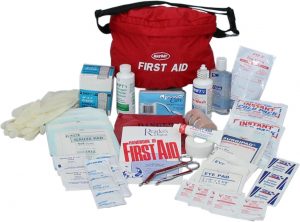
Disasters strike without warning, leaving destruction and uncertainty in their wake. Whether it’s a massive earthquake like the looming threat of the West Valley Fault in Metro Manila or a super typhoon as devastating as Yolanda, preparedness is key to survival. While no one can predict when calamities will occur, families can take steps to safeguard their lives by being ready for any eventuality.
One of the most effective ways to prepare for disasters is by having a well-stocked emergency pack. This essential kit can mean the difference between life and death during a crisis.
What is an Emergency Pack?
An emergency pack is a bag or container filled with essential items needed during accidents or disasters. It should be readily accessible in your home, placed in a prominent location where family members can grab it quickly. A complete emergency pack significantly increases the chances of survival during calamities.
What Should Be in an Emergency Pack?
A comprehensive emergency pack contains various items to help you stay safe and comfortable during a disaster. Here are the must-haves:
- Water. Ensure there are bottles of clean drinking water to sustain your family. After a disaster, access to safe water might be limited.
- Food. Pack non-perishable, easy-to-eat items such as canned goods, biscuits, and dried food. These will keep hunger at bay when food supplies are disrupted.
- Battery-Powered Radio. Stay informed about rescue efforts and weather updates by including a battery-operated radio in your kit.
- Flashlight and Extra Batteries. Power outages are common during disasters. A flashlight and extra batteries are essential for navigating in the dark.
- First Aid Kit. A well-stocked first aid kit can help manage injuries and prevent them from worsening. Include basic supplies such as bandages, antiseptic, pain relievers, and any necessary prescription medications.
- Whistle. A whistle is invaluable for signaling rescuers if you’re trapped under debris or in an inaccessible location.
Additional Items for Your Emergency Pack
Depending on your family’s needs, consider including the following:
- Blankets
- Extra plastic bags
- Rope
- Mosquito net
- Duct tape
- Soap
- Additional clothing and underwear
- Tarp or makeshift shelter
Important Tips for Maintaining Your Emergency Pack
To ensure your emergency pack is ready when needed:
- Regularly Check Expiration Dates. Monitor the shelf life of food and medications, replacing them as they near expiration.
- Conduct Routine Inspections. Periodically inspect your emergency pack to ensure all items are intact, functional, and complete.
- Keep it Accessible. Store the emergency pack in a location where all family members can easily reach it during a crisis.
Why Preparedness Matters
While disasters cannot always be prevented, their impact on lives can be mitigated through readiness and awareness. Beyond having an emergency pack, participating in emergency drills and staying informed about potential threats are crucial steps in disaster preparedness.
With a complete and accessible emergency pack, you and your family will be better equipped to face the unexpected, ensuring your safety and survival during challenging times.


